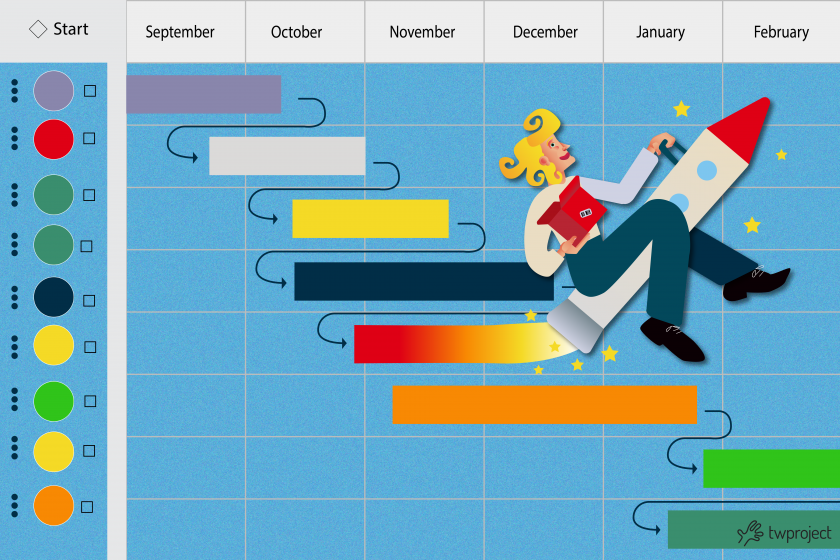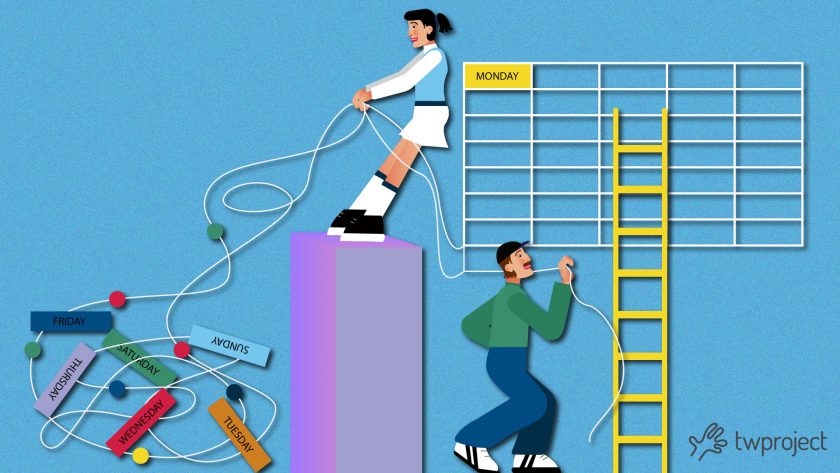-
Reviewing an issue in the production process
Issues in the production process in the modern industrial world are common and can harm a company’s efficiency and profitability. These problems range from minor hiccups to severe failures that can undermine the entire production line. Reviewing these problems is not only a core part of project managers working in industrial manufacturing but can be … Continue reading "Reviewing an issue in the production process"
-
Project roadmap: What it is and why it is important
Let’s see what a project roadmap is before going into the detailed explanation. A roadmap, also called a project roadmap, is a strategic business planning tool mostly used to outline the future vision of a system, service, or product. CONTENT INDEX Why is a roadmap important? How do you create a project roadmap? Identify interested … Continue reading "Project roadmap: What it is and why it is important"
-
Planning a product launch activity with the Gantt
A product launch activity is a complex undertaking that requires careful planning. The success of a product depends not only on its quality but also on the company’s ability to present it to the market in the right way, at the right time. CONTENT What to know before planning a new product launch activity Market … Continue reading "Planning a product launch activity with the Gantt"
-
Project work performance domain for efficient processes
The project work performance domain is one of the eight performance domains introduced in PMBOK’s seventh edition, constituting an integrated system to ensure the successful delivery of a project. Let’s see what it is all about in this article. CONTENT What is the project work performance domain? Managing existing workflow Keeping project team motivation and … Continue reading "Project work performance domain for efficient processes"
-
From design to implementation: managing everything in one software
From planning to implementation, project management is arguably the most multifaceted challenge for any project manager. Among planning, coordinating resources, and monitoring progress, the project manager often must navigate a sea of intricacies, trying to balance a myriad of tasks and responsibilities. CONTENT From design to project implementation: 5 key stages 3 common problems in … Continue reading "From design to implementation: managing everything in one software"
-
Work management software: Cepi Silos’ experience
Work management software for project optimization: this is the key to effective work management in an era when digitization is changing how companies operate. Efficient project management has become a key element in the success of any business. CONTENT How important it is to have work management software Cepi Silos’ experience in project management Twproject: … Continue reading "Work management software: Cepi Silos’ experience"
-
How to prepare a project with Gantt: key steps and tips
Preparing a project with Gantt is critical in ensuring efficient planning and optimal management of activities. Using this visual tool, you can organize, assign and monitor activities, enabling precise control and better resource allocation. CONTENT 6 steps to prepare a project 1.Analysis 2.Project type identification 3.Project objectives definition 4.Project planning 5.Project monitoring and control 6.Project … Continue reading "How to prepare a project with Gantt: key steps and tips"
-
Performance domain: development and life cycle
The life cycle and development approach are strategic in the Performance Domain. As detailed in PMBOK 7, the goal is to establish the appropriate pace at which to carry out a project’s activities to generate value. It is based on a key concept: each project is unique – no single development approach can be applicable … Continue reading "Performance domain: development and life cycle"
-
Auditing project management: the innovation of Twproject for Argea
Auditing project management is a complex challenge for companies and public organizations. Monitoring and controlling internal processes, ensuring regulatory compliance, and creating accurate reports requires effective tools and methodologies. CONTENT Types of project management audits, benefits, and challenges The benefits of project management audits The challenges of audits in project management Auditing project management with … Continue reading "Auditing project management: the innovation of Twproject for Argea"
-
How to present a project to stakeholders
Is there an optimal way to present a project to stakeholders? In the world of project management, presenting and communicating a product’s strategy is not an isolated phase of the project’s life cycle. In fact, anyone involved in project management must deal with project sponsors and stakeholders and maintaining an open and effective communication with … Continue reading "How to present a project to stakeholders"
-
Stakeholder performance domain: how to increase engagement?
In the seventh edition of the PMBOK, the stakeholder performance domain is crucial in ensuring that stakeholders’ needs, expectations, and influences are appropriately understood and managed. Understanding the needs, expectations, and dynamics of stakeholders has become crucial to project success, and the stakeholder performance domain offers a structured and focused approach to addressing this challenge. … Continue reading "Stakeholder performance domain: how to increase engagement?"
-
Project organizational structure in Project Management
The project organizational structure is an essential tool for determining the hierarchy of people, their function, workflow and reporting system. It is a factor in project management that plays a fundamental role in guiding and defining the way in which the organization carries out its operations. There are different project organizational structures defined according to … Continue reading "Project organizational structure in Project Management"
-
Simplifying project planning: the Advance case
Project planning often proves to be a complex and challenging task for businesses. Yet with the help of modern project management tools, you can streamline this process and improve overall efficiency. This article will examine how the Advance company successfully employed Twproject to improve its awareness, reduce overhead in project management, and improve compliance with … Continue reading "Simplifying project planning: the Advance case"
-
Project data analysis: how to maximize results
Project data analysis has become a core practice in the increasingly competitive world of project management. The data-driven approach is crucial to improving efficiency, identifying emerging problems, and predicting future trends. INDICE Why data analysis is critical in project management Examples of project data analysis 1. Identify delays 2. Forecast necessary resources 3. Monitor budget … Continue reading "Project data analysis: how to maximize results"
-
Planning Performance Domain: the elements for successful planning
In the project management sphere, the Planning Performance Domain, as outlined in Project Management Body of Knowledge (PMBOK) 7, is central to determining a project’s success. This new edition emphasizes how to be successful in a project. It is imperative to plan activities and functions around changing conditions efficiently. Let’s learn more about it in … Continue reading "Planning Performance Domain: the elements for successful planning"
Project management
Choose the category you are interested in:
AgileComparisonCost managementPm expertProduct updatesProductivityProject managementResource managementTime managementUsage tips















